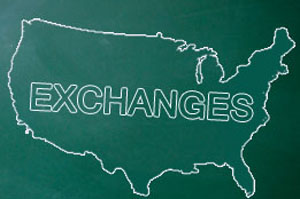The road to enrolling Americans in the online health exchanges has been fraught with glitches and a rich source of political fodder. But a new survey says there are signs of improvement.
 Seventeen percent of people potentially eligible for coverage visited the marketplaces when they opened in October, according to a survey of 622 people conducted by The Commonwealth Fund. That encompasses people going to both the finicky healthcare.gov run by the federal government for 36 states and those who went to the marketplaces run by 14 states and the District of Columbia. By the end of December — after government officials announced a fix to some of the website glitches — that number had risen to 24 percent.
Seventeen percent of people potentially eligible for coverage visited the marketplaces when they opened in October, according to a survey of 622 people conducted by The Commonwealth Fund. That encompasses people going to both the finicky healthcare.gov run by the federal government for 36 states and those who went to the marketplaces run by 14 states and the District of Columbia. By the end of December — after government officials announced a fix to some of the website glitches — that number had risen to 24 percent.
Among the shoppers visiting the marketplace, researchers were surprised to find that people aged 19 to 34 comprised 41 percent of the total visitors. These “young invincibles,” as they have been dubbed, are the youthful and often healthy people needed to help hold down insurers’ overall health care costs.
“It’s a striking finding,” said Sara Collins, lead author and vice president for the Health Care Coverage and Access program at The Commonwealth Fund. “That’s good news for the health of risk pools.”
The survey also found that 77 percent of adults who visited the marketplaces said they were in excellent, very good, or good health.
The number of visitors who actually enrolled in a plan is yet to be determined, and only about 38 percent of visitors said they ended up applying for health insurance, according to the survey of a nationally representative sample of 622 adults who are potentially eligible for the law’s new coverage option. The survey has a margin of error of plus or minus 4.65 percent.
But the survey suggests room for improvement. While logging into the federal website has become much easier, more people in December found it difficult to determine their out-of-pocket costs than in October.
More than a third of the adults who visited the marketplaces also said it was either somewhat difficult or very difficult to figure out whether they were eligible for financial assistance or Medicaid. This could impact the low-income families who Collins said are most vulnerable to remaining uninsured or missing a deadline.
“People who have lower incomes often have very busy, busy lives,” she said. “It will be continue to be important to make sure people are aware they are eligible for significant subsidies and Medicaid.”






